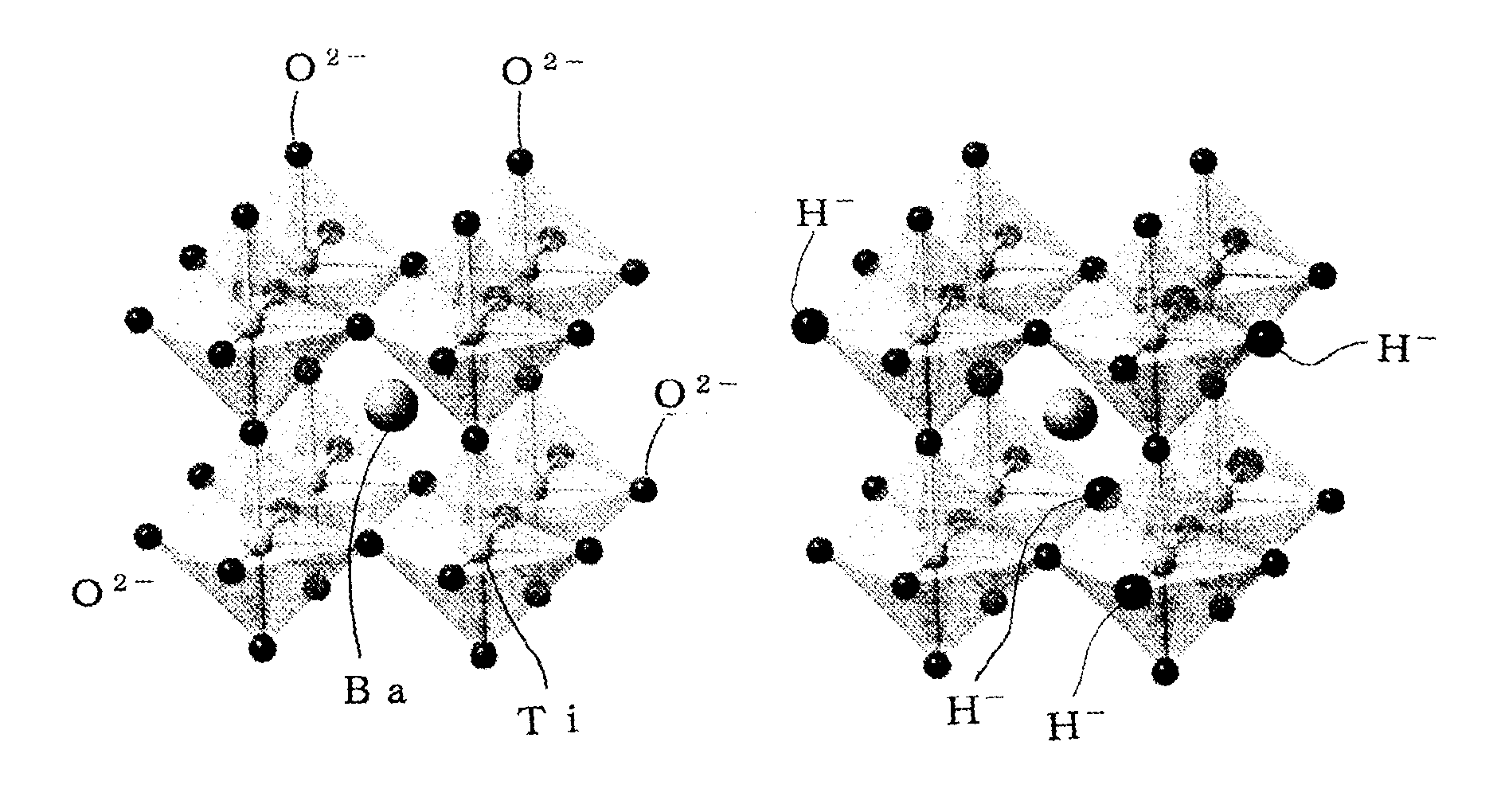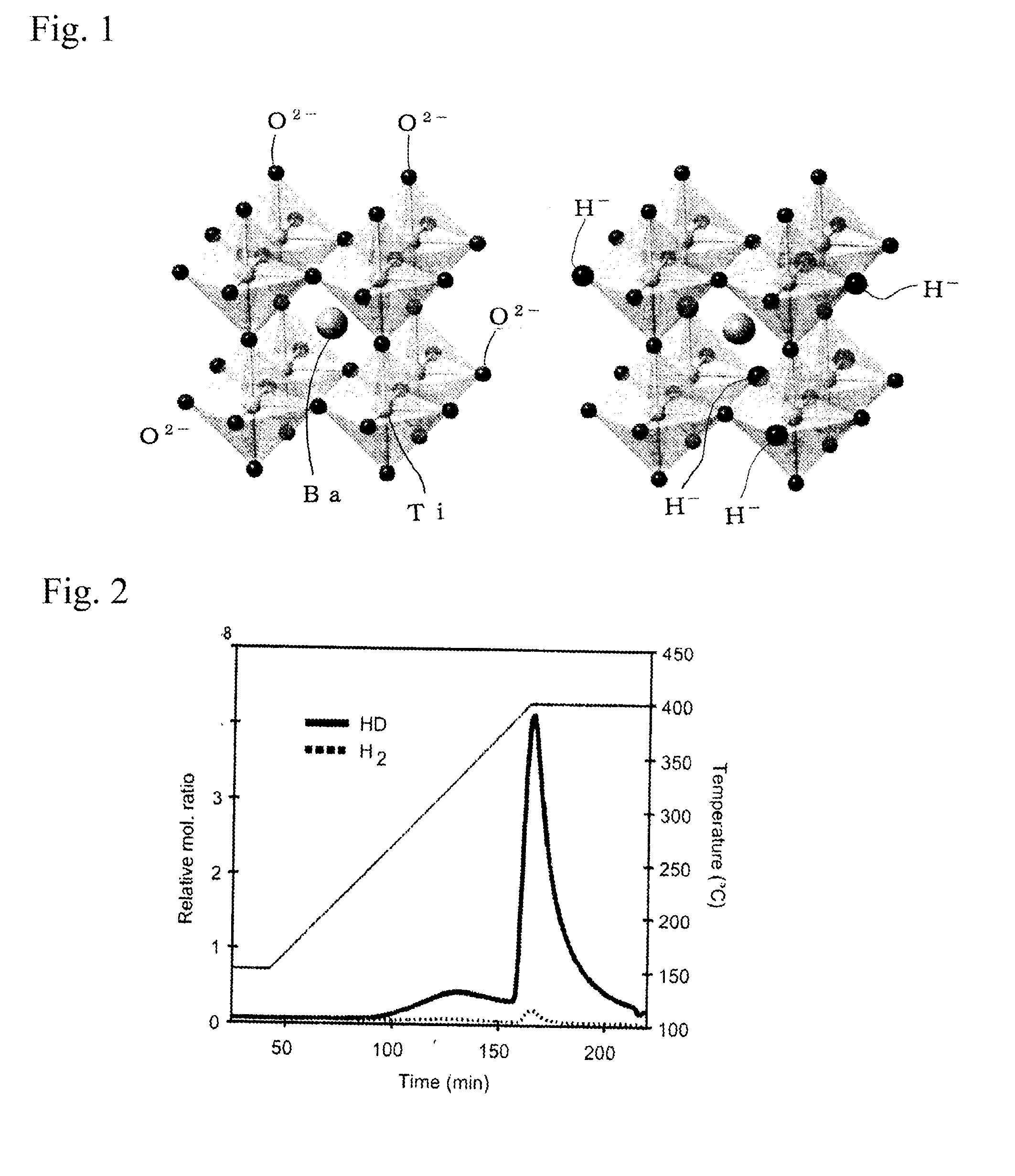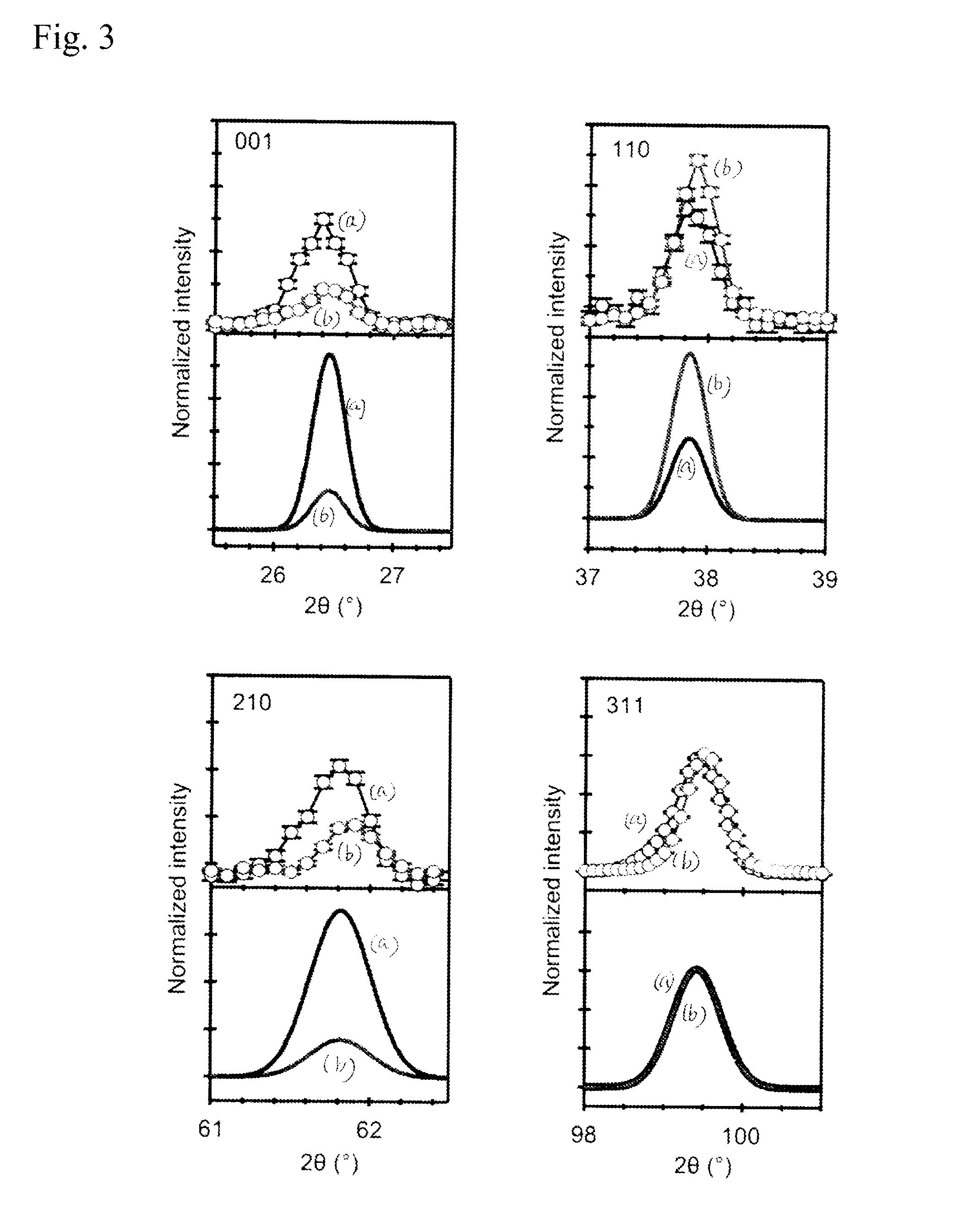Perovskite oxide containing hydride ion, and method for manufacturing same
a technology of hydride ions and perovskite oxide, which is applied in the field of titaniumcontaining perovskite oxide, can solve the problems of poor compatibility between oxide ions and hydride ions, the validity of which is still disputed, and the effect of almost no studies on negatively charged hydride ions
- Summary
- Abstract
- Description
- Claims
- Application Information
AI Technical Summary
Benefits of technology
Problems solved by technology
Method used
Image
Examples
example 1
[0060]The present invention will now be further described in detail based on Examples. Barium titanate (BaTiO3) particles having a particle size in the range of 100 nm to 200 nm and synthesized by a synthesis method that uses a solution, such as a citric acid method, were heat-treated at about 200° C. to remove moisture attached to the surfaces of the particles. Subsequently, three equivalents of CaH2 powder and the BaTiO3 particles were mixed with each other in a glove box and molded into a pellet using a hand press. The pellet was inserted into a quartz tube having an internal volume of about 15 cm3 and vacuum-sealed. Three samples were heat-treated under the heat treatment conditions shown in Table 1 to cause a hydrogenation reaction. The samples after the heat treatment were treated with a 0.1 M NH4Cl methanol solution to remove an unreacted CaH2 and a by-product CaO that were attached to a product.
TABLE 1Heat treatmentHeat treatmentSample No.temperature (° C.)time (h)Compositio...
example 2
[0067]An MTiO3 (M=Ba, Sr, or Ca) single crystal thin film having an area of 1 cm×1 cm and a thickness of 120 nm was deposited as a sample on an LSAT substrate by a PLD method described below. An MTiO3 (M=Ba, Sr, or Ca) pellet was used as a target. The temperature of the substrate was 700° C., the oxygen pressure during the deposition was 0.05 Pa, and a KrF excimer laser pulse (wavelength=248 nm) was employed as an excitation light source. In a glove box filled with Ar, the obtained single crystal thin film and 0.2 g of CaH2 powder were vacuum-sealed in a quartz tube and heat-treated at a temperature of 300° C. to 530° C. for one day to cause a hydrogenation reaction. As in Example 1, an unreacted CaH2 and a by-product CaO that were attached to a product were removed by ultrasonic cleaning with acetone.
[0068]It was found from X-ray diffraction that the obtained sample was a single crystal thin film in which a perovskite crystal structure was maintained. It was found from the depth pr...
example 3
[0071]Layered strontium titanate (Sr2TiO4 and Sr3Ti2O7) particles having a particle size of about 200 nm and synthesized by a synthesis method that uses a solution, such as a citric acid method, were subjected to vacuum drying at 120° C. to sufficiently remove moisture attached to the surfaces of the particles. Subsequently, three equivalents of CaH2 powder and the Sr2TiO4 particles or six equivalents of CaH2 powder and the Sr2Ti2O7 particles were mixed with each other in a glove box and molded into a pellet using a hand press. The pellet was inserted into a Pyrex (registered trademark) tube having an internal volume of about 15 cm3 and vacuum-sealed. The sample was heat-treated at 480° C. for seven days. The sample after the heat treatment was washed with a 0.1 M NH4Cl / methanol solution to remove a remaining unreacted CaH2 and a by-product CaO.
[0072]The sample washed with a 0.1 M NH4Cl / methanol solution showed dark blue as in the case of BaTiO3−xHx or the like. The obtained sample ...
PUM
| Property | Measurement | Unit |
|---|---|---|
| Electrical conductivity | aaaaa | aaaaa |
Abstract
Description
Claims
Application Information
 Login to View More
Login to View More - R&D
- Intellectual Property
- Life Sciences
- Materials
- Tech Scout
- Unparalleled Data Quality
- Higher Quality Content
- 60% Fewer Hallucinations
Browse by: Latest US Patents, China's latest patents, Technical Efficacy Thesaurus, Application Domain, Technology Topic, Popular Technical Reports.
© 2025 PatSnap. All rights reserved.Legal|Privacy policy|Modern Slavery Act Transparency Statement|Sitemap|About US| Contact US: help@patsnap.com



